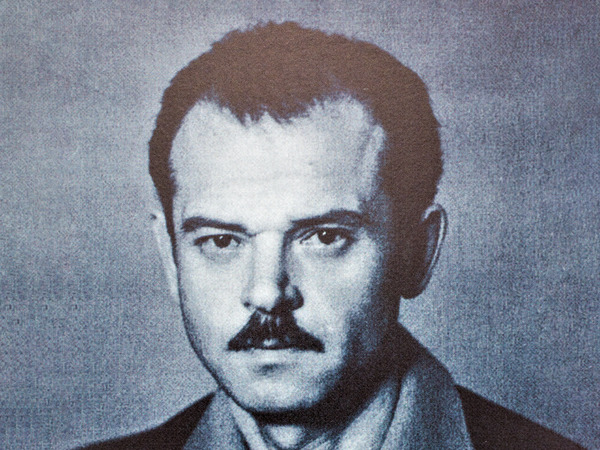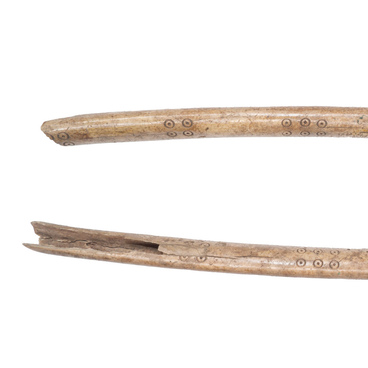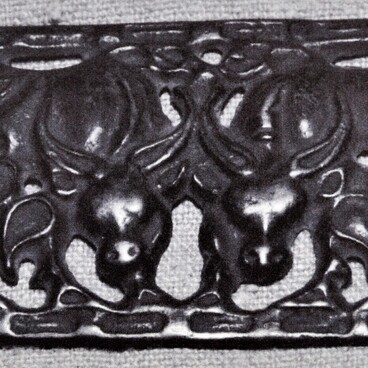Mikhail Aksenov is a Siberian archaeologist, Doctor of Historical Sciences and author of many publications on archeology of Eastern Siberia. He examined excavations results in Irkutsk and Irkutsk region and studied how early humans lived in this area.
Aksenov was born in 1934 in Irkutsk. He was fond of boxing and painting during his school years, and after finishing he began to work at the Lisikhinsky brick factory. Then he served in the army, and after demobilization he entered the Faculty of History and Philology in Irkutsk State University.
As a student, Mikhail Aksenov had an archaeological internship in Malta and Ust-Belaya villages. His supervisor was Mikhail Gerasimov, a doctor of sciences and an anthropologist, who created a special methodology. With the help of this methodology, scientists restore the appearance of a person based on fragments of the skeleton. This is mainly applied for facial reconstruction using the skull. For example, Gerasimov was the first person to determine what a late Neanderthal looked like. Working with the famous researcher, Mikhail Aksenov began to examine artifacts made by indigenous population of Siberia.
When Aksenov graduated from the university, he began his independent excavations on the Verkholenskaya Mountain along with his colleague Herman Medvedev. Based on these materials, in 1970, the archaeologist defended his PhD thesis ‘Verkholenskaya Mountain — monument to the Stone Age of Siberia’, in 1989 he defended his doctoral thesis on the topic ‘Paleolithic and Mesolithic eras of the Upper Lena’. Contemporaries noted Mikhail Aksenov’s extraordinary “intuition”: he discovered archaeological objects even in places that had not been studied and described ever before.
Since the 1960s, Mikhail Aksenov had been working as the deputy director for scientific work of the Irkutsk Regional Museum of Regional Ethnography (now the Irkutsk Regional Museum of Local History), and had been teaching for many years at the Faculty of History of Irkutsk State University. His work was deemed to be “one of the main achievements of his life” by his colleagues — now his students-archaeologists work in different cities around the country.
Mikhail Aksenov continually traveled “to the site”: he was exploring territories along the Lena, Vitim and other districts of the Irkutsk region, and was engaged in excavations and examinations of ancient archaeological sites of Eastern Siberia.
Aksenov was born in 1934 in Irkutsk. He was fond of boxing and painting during his school years, and after finishing he began to work at the Lisikhinsky brick factory. Then he served in the army, and after demobilization he entered the Faculty of History and Philology in Irkutsk State University.
As a student, Mikhail Aksenov had an archaeological internship in Malta and Ust-Belaya villages. His supervisor was Mikhail Gerasimov, a doctor of sciences and an anthropologist, who created a special methodology. With the help of this methodology, scientists restore the appearance of a person based on fragments of the skeleton. This is mainly applied for facial reconstruction using the skull. For example, Gerasimov was the first person to determine what a late Neanderthal looked like. Working with the famous researcher, Mikhail Aksenov began to examine artifacts made by indigenous population of Siberia.
When Aksenov graduated from the university, he began his independent excavations on the Verkholenskaya Mountain along with his colleague Herman Medvedev. Based on these materials, in 1970, the archaeologist defended his PhD thesis ‘Verkholenskaya Mountain — monument to the Stone Age of Siberia’, in 1989 he defended his doctoral thesis on the topic ‘Paleolithic and Mesolithic eras of the Upper Lena’. Contemporaries noted Mikhail Aksenov’s extraordinary “intuition”: he discovered archaeological objects even in places that had not been studied and described ever before.
Since the 1960s, Mikhail Aksenov had been working as the deputy director for scientific work of the Irkutsk Regional Museum of Regional Ethnography (now the Irkutsk Regional Museum of Local History), and had been teaching for many years at the Faculty of History of Irkutsk State University. His work was deemed to be “one of the main achievements of his life” by his colleagues — now his students-archaeologists work in different cities around the country.
Mikhail Aksenov continually traveled “to the site”: he was exploring territories along the Lena, Vitim and other districts of the Irkutsk region, and was engaged in excavations and examinations of ancient archaeological sites of Eastern Siberia.



